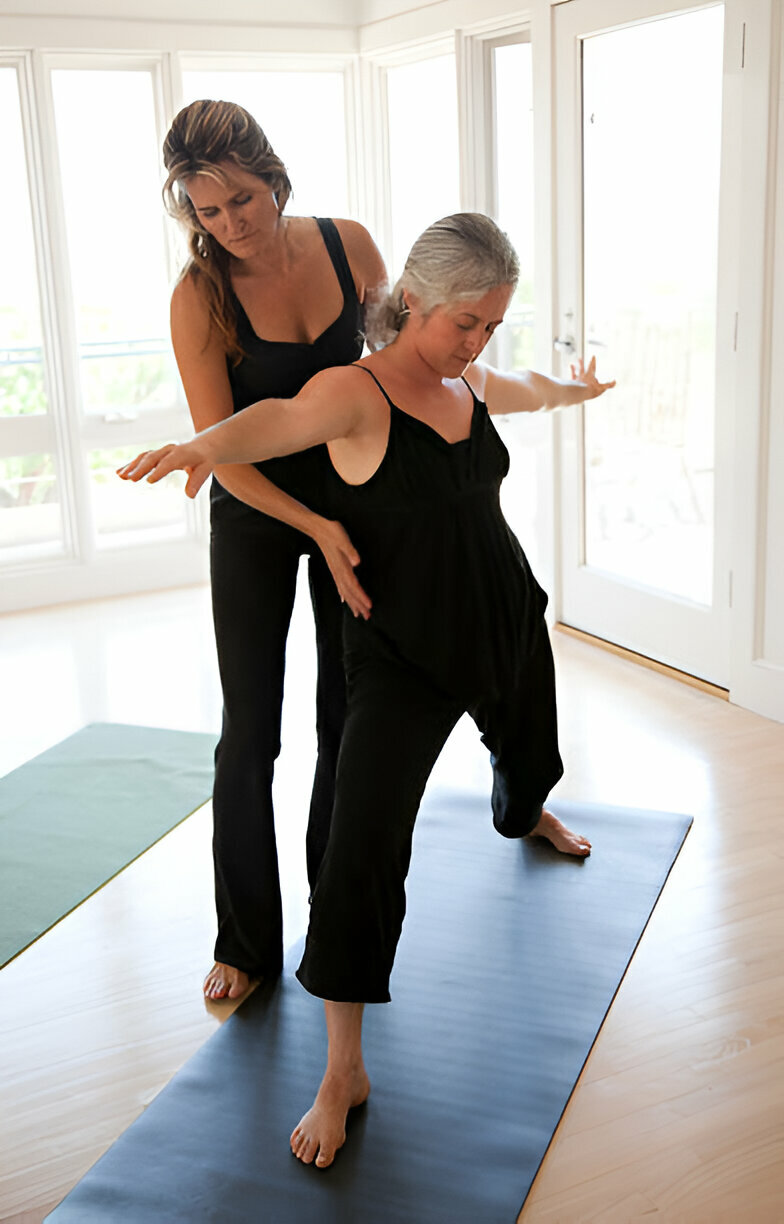-
Get in Touch
+1 617-410-6016
Yoga Therapy
About Service
What Is Yoga Therapy??
Although all yoga is potentially therapeutic and healing, yoga therapy is the specific application of yogic tools—postures/exercises, breathwork, meditation techniques, and more—to address an individual’s physical, mental, and emotional needs.
.
Many people first learn about yoga through its physical practices, but a common misconception is that it’s all about stretching or movement. In fact, yoga therapy can help people who can’t move at all, as well as active individuals!
The yogic model of health is unique because it addresses every aspect of life rather than considering each body part or system separately. Yoga therapy is a safe way of working with the natural capacity of your body and mind to optimize well-being.
.
A general public yoga class can certainly ease everyday aches, pains, and mood complaints. But a yoga therapy session, whether one-to-one or in a small group, goes much further because it is tailored to the individual.
.
Yoga therapists have in-depth training to help them assess and keep their clients safe. They work with you to address your specific goals while considering any limitations you might be experiencing. The practices your yoga therapist recommends could include:
- Movement ranging from gentle to vigorous
- Breathing techniques
- Meditation or visualization practices
- Physical postures that address specific areas of discomfort or musculoskeletal imbalances
- Any combination of tools like these!
.
It all depends on what you need to increase your health and well-being.

Why Yoga Therapy??
Yoga therapy meets people where they are, connecting them to their own innate healing potential. Yoga therapy clients report experiencing improved mood, decreased stress and chronic pain, and more. See a sample list of research articles on yoga therapy and yoga.
One mechanism researchers have uncovered is yoga’s capacity to affect the nervous system by improving our ability to self-regulate. The practice uses methods that work via both the mind and the body, known in research as top-down and bottom-up regulation. Put simply, top-down regulation uses cognitive tools like meditation and ethical inquiry to affect the state of the body, whereas bottom-up regulation uses the body itself, through movement and breathing techniques, to change the state of the nervous system and to affect thoughts and emotions.
In short, the practice of yoga equips us with a comprehensive toolkit to help support regulation and resilience in the mind-body system. Yoga therapy is the specific use of these tools by a trained practitioner.
Click below to find out how individually tailored yoga therapy can help with
* Chronic pain, including low-back pain, arthritis, premenstrual syndrome (PMS), and other types of pain such as that associated with fibromyalgia and chronic fatigue syndrome
* Mental health, including concerns like anxiety, depression, trauma and PTSD, insomnia, and others
* Neurological issues and complications of stroke, multiple sclerosis (MS), Parkinson’s disease, and traumatic brain injury (TBI)
* Support for illnesses such as cancer, diabetes, and heart disease
* Overall well-being (you don’t need to be sick or in pain for yoga therapy to have value!) and healthy aging